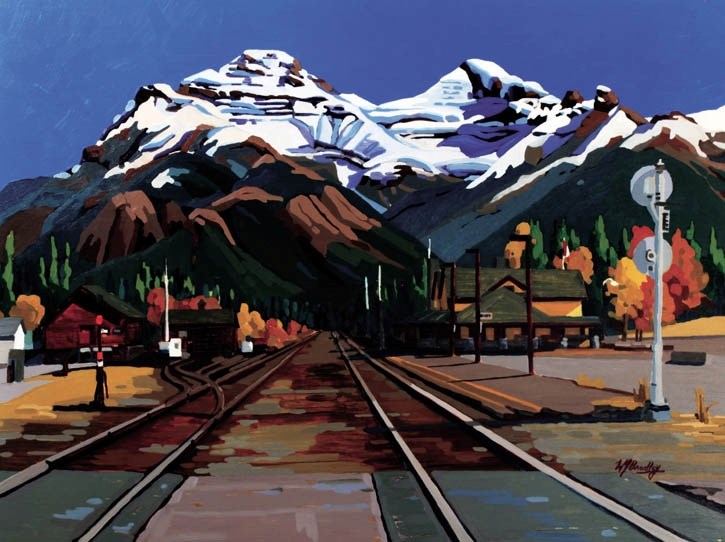For Banff-born artist Wendy Bradley, being invited to exhibit her work at the Whyte Museum of the Canadian Rockies closes a circle opened many years ago.
As a little girl, when the public library was still in its old location (now the museum archives), Bradley would slip downstairs to the gallery to investigate artwork by Peter and Catharine Whyte and Carl Rungius.
“I used to go downstairs every time there was a new show and see what was on the walls, and I can vividly remember – I don’t know how old I was – I stood in that gallery and I waited for everyone to leave and I said out loud ‘may I please show my art here some day?’ So for me to be asked to do a show, it is a wonderful completion of a circle,” Bradley said, Monday (Feb. 28).
And the only show she could possibly do at the Whyte Museum, Bradley said, is one that features her love of her home of Banff and the Rocky Mountains.
As a result of the invitation and her love for Banff, Bradley is presenting 30 oil paintings, two of which are for display and the other 28 are for sale as part of W.J. Bradley: A Sense of Place Art Show & Sale at the Whyte Museum March 4 to April 18. An opening reception will be held Friday (March 4) from 6-8 p.m.
“My sense of place is derived from my long family history, my own experience of the landscape and being the recipient of abundant gifts of a life lived in this vibrant mountain culture,” she said.
Four generations of Bradley’s family have lived in Banff, including her two children, twins Kurt and Kathryn. Her grandfather, Chuck Millar, worked as a trail guide and packer for the Brewster family business in the late 1920s. In the early 1930s, Millar started working at Assiniboine Lodge, where his wife, Doris, and their three children joined him. Chuck’s Ridge, which separates Nestor and Elizabeth Creeks, northwest of Mt. Assiniboine, is named for Bradley’s grandfather.
Bradley works in oils and for the past seven years she has been perfecting a glazing technique that gives her work a luminosity that creates a remarkable glow.
But it is not a fast or an easy technique.
Each area of the painting, whether sky or water, even the elements within the water, such as the surface reflection, requires a different number of layers of glaze, some two, others six.
And as each layer also takes time to dry, a single painting can take 12 weeks to complete.
The result is also surprisingly warm and, as Bradley said from her perspective, filled with joy and gratitude, along with a responsibility of protecting her birthplace for future generations.
“I am filled with gratitude, there’s a lot of gratitude for the place, the people and the culture and how I connect in a different way.“For someone from the area I want them to look at the images and I want to convey how I feel about them, so that there may be a connection for them. And for someone who has never been to the area, I want to convey how I feel about these places, but also my experience of belonging here in this part of the world, in this place,” she said.
The exhibition includes images, including iconic ones that have deep meaning for Bradley, such as Assiniboine, Vermilion Lakes, and the lesser known or visited places such as Lake McArthur, as well as areas around Banff such as Bow Falls, Fenland Trail and the hoodoos.
“There are so many layers to sense of place; there is geographical, historical, experiential, culture and the arts, memories of the important people in these places and in your life,” she said. “I love the way mountain landscape changes. It can be moody or bright or change over the course of the day and that really ties into the whole human experience. At the core there is that authentic self and that all of the wind or light can move over the landscape and it stills remain authentic, it just expresses itself in different ways,” she said.
And, given her long connection to the Banff region, when she needs to reconnect, she heads into the landscape she loves.
“When I want comfort, when I want inspiration, I go out there. I just drink in what is happening in the landscape.”




